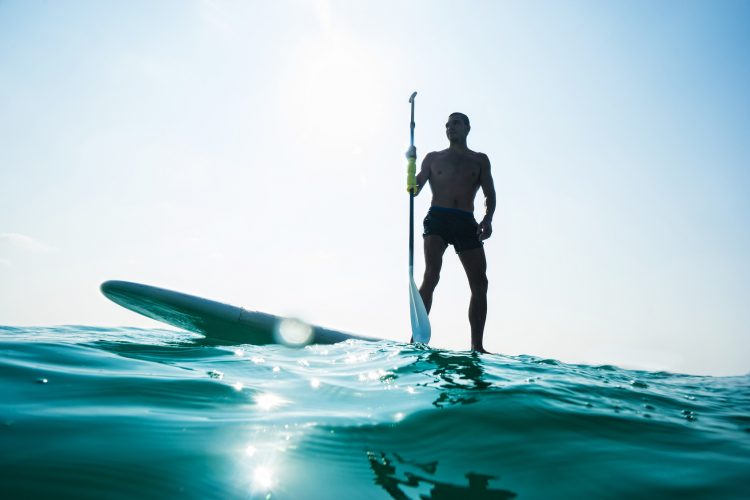 You’ve heard people talk about paddle boarding. It’s all the talk right now, but do you really know what paddle boarding is? What’s all the hype about?
You’ve heard people talk about paddle boarding. It’s all the talk right now, but do you really know what paddle boarding is? What’s all the hype about?
Paddle boarding is becoming one of the most popular water sports. Delivering a full-body workout, paddle boarding can also be a great way to enjoy beautiful scenery and nature. But what is paddle boarding exactly?
In this article, we’ll cover what paddle boarding is, why it’s becoming so popular and how you can get started.
What is Paddle Boarding?
What is paddle boarding and why is everyone talking about it? Paddle boarding is a popular water sport best performed in the open ocean. People use their arms while lying, kneeling or standing on a paddle board or surfboard to swim and propel forward.
Stand up paddle boarding (SUP) is a newer derivative of paddle boarding that has only been around for the past decade. This sport is becoming more and more popular each year. Unlike surfing, you can practice this sport in a lake or river in addition to the ocean.
It’s like a combination of surfing and kayaking. Yet, you do not need waves to paddle board as you would with surfing. In fact, calm, flat water is better if you’re a beginner.
A full-body workout
People are drawn to paddle boarding for several reasons, one being the full-body workout it provides along with the fun opportunity to get out in water. Stand up paddle boarding works your core, improves our cardio fitness and challenges you balance and flexibility. Because there’s virtually no impact, people will choose this sport over something that’s harder on your body, like running.
It doesn’t matter your age or fitness level – anyone can try paddle boarding. This workout can help improve your overall fitness level no matter where you were at to start with. It’s easy to grasp and get the hang of, which makes stand up paddle boarding a great workout for anyone.
This water sport also helps to relieve stress. People are even practicing their yoga moves on a stand-up paddle board, which has been shown to improve their fitness and stress levels.
History of Paddle Boarding
While stand up paddle boarding is newer, original paddle boarding got its roots in the 1960s. The Beach Boys of Waikiki stood on their longboards to get a better view of the surf. They used outrigger paddles to paddle out.
Yet paddle boarding as a sport didn’t become popular until the 2000s. Pro surfer Laird Hamilton used to stand up paddle board to keep training on calmer water days for the ocean.
Now the sport has gone mainstream. You can find paddle boards in a wide range of sizes and styles. There are races and meetups for stand up paddle boarding across the country.
Many people are excited about the competition aspect of paddle boarding, but what is paddle boarding for you? Maybe it’s for recreation, fishing, long-distance touring, yoga, or maybe even surfing. Even if you’ve never stepped on a paddle board, you can easily learn to love this sport.
How to Choose a Paddle Board
If you’ve been wondering what is paddle boarding and how do I get started, you first need to learn how to choose a paddle board.
With stand up paddle boarding being so popular, you’ve picked a great time to get in the sport. The selection of stand up paddle boards is endless. Whether you want one for a very specific purpose or a more versatile board, you won’t have a problem finding the right board for you.
For a beginner, you want to start with a wide board of 30 inches or greater. This is generally a great starting point.
Then you have light, durable boards that are carbon vacuum-bagged. These are responsive yet more expensive. The soft-top boards that are heavier and more durable will be less expensive.
Be sure to talk to a certified paddleboard expert when shopping. Test out the boards in the water before you buy them if you can to make sure you got the right fit.
Don’t forget the paddle
After finding the right stand up paddle board, you’ll need to invest in the right paddle. These are going to be a little bit lighter and longer than a canoe paddle. They have a little bend near the blade as well.
Your local shop will help you determine how long your paddle shaft should be. They will also saw off any excess length and attach the handle for you. In general, the paddle should be anywhere from 4 to 7 inches taller than you.
Lighter paddles may be a little more expensive but for good reason. The expensive material in these will help reduce any hand fatigue that you would get with a heavier paddle.
Tips for Getting Started
Now you know what paddle boarding is and you have your equipment, but how on earth are you going to stay standing upright? Understand that you might not get it on your first try. But avoid these common beginner mistakes and try the following tips:
- Go out in calm water with no wind or waves.
- Place one knee on each side of the board. Your knees should be straddling the board’s handle hole.
- Place your hands on the shaft of the paddle and directly in front of your knees. Keep your fingers spread wide.
- Keep pressing your fingertips and bring one foot up to where your knee was. Straighten the elbow on this side for more room.
- Repeat on the other side and stand up slowly. Bring the paddle up with you and use it as a balancing stick.
- When you’re ready, place the paddle blade in the water, the bent part facing forward.
- Bend your legs slightly as if you’re skiing.
- Gaze ahead rather than downward.
- Work from your core instead of your arms.
Stand up paddle boarding is a fun, stress-relieving workout that anyone can do. Ready to get started? Check out our database of stand-up paddle board reviews to find the right one for you!
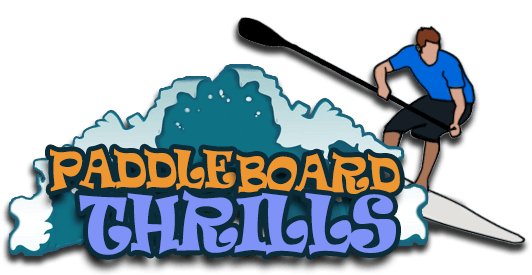
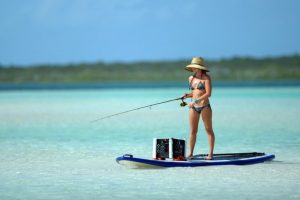
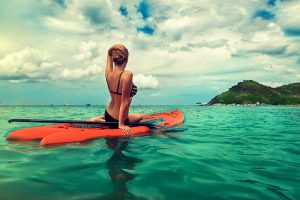

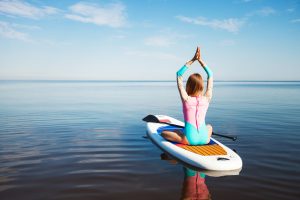

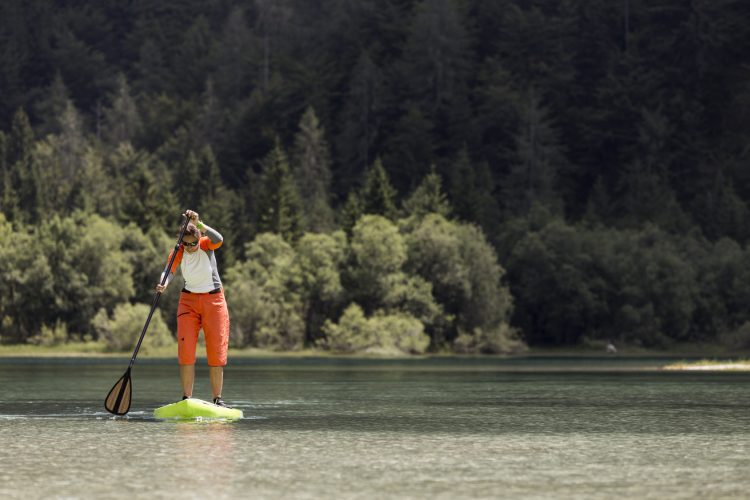
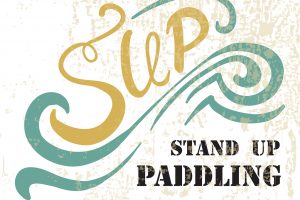

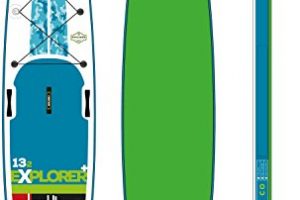
Pingback: 4 Vacation Activities for Adventurers - Think Research Expose | Think Research Expose
Pingback: The Best Inflatable Stand Up Paddleboard Under $500 - Best Paddle Board Reviews